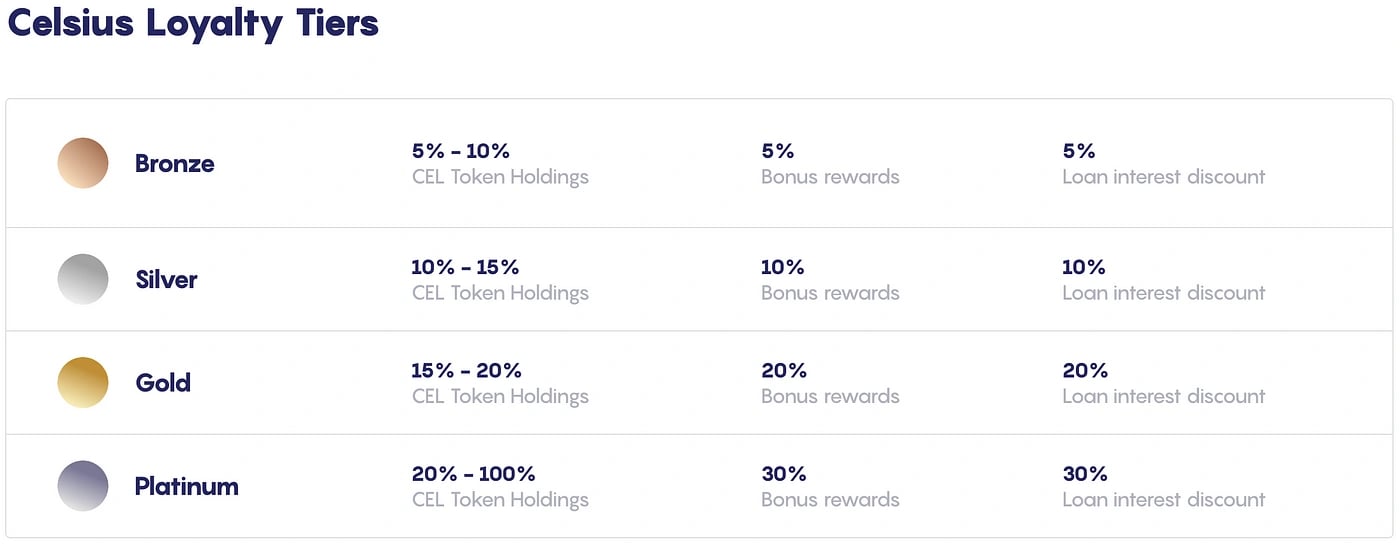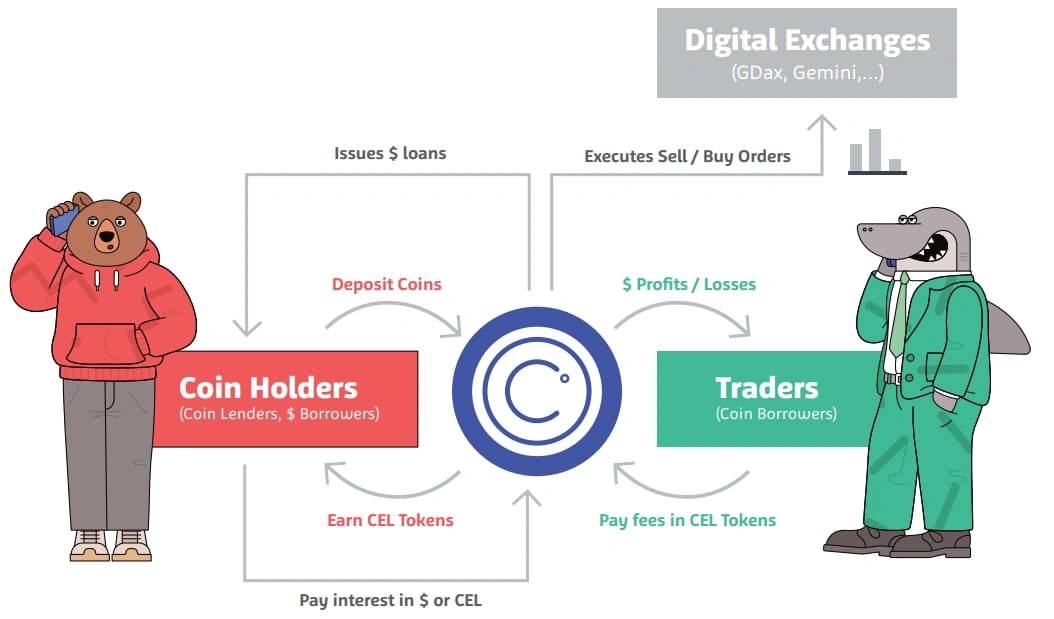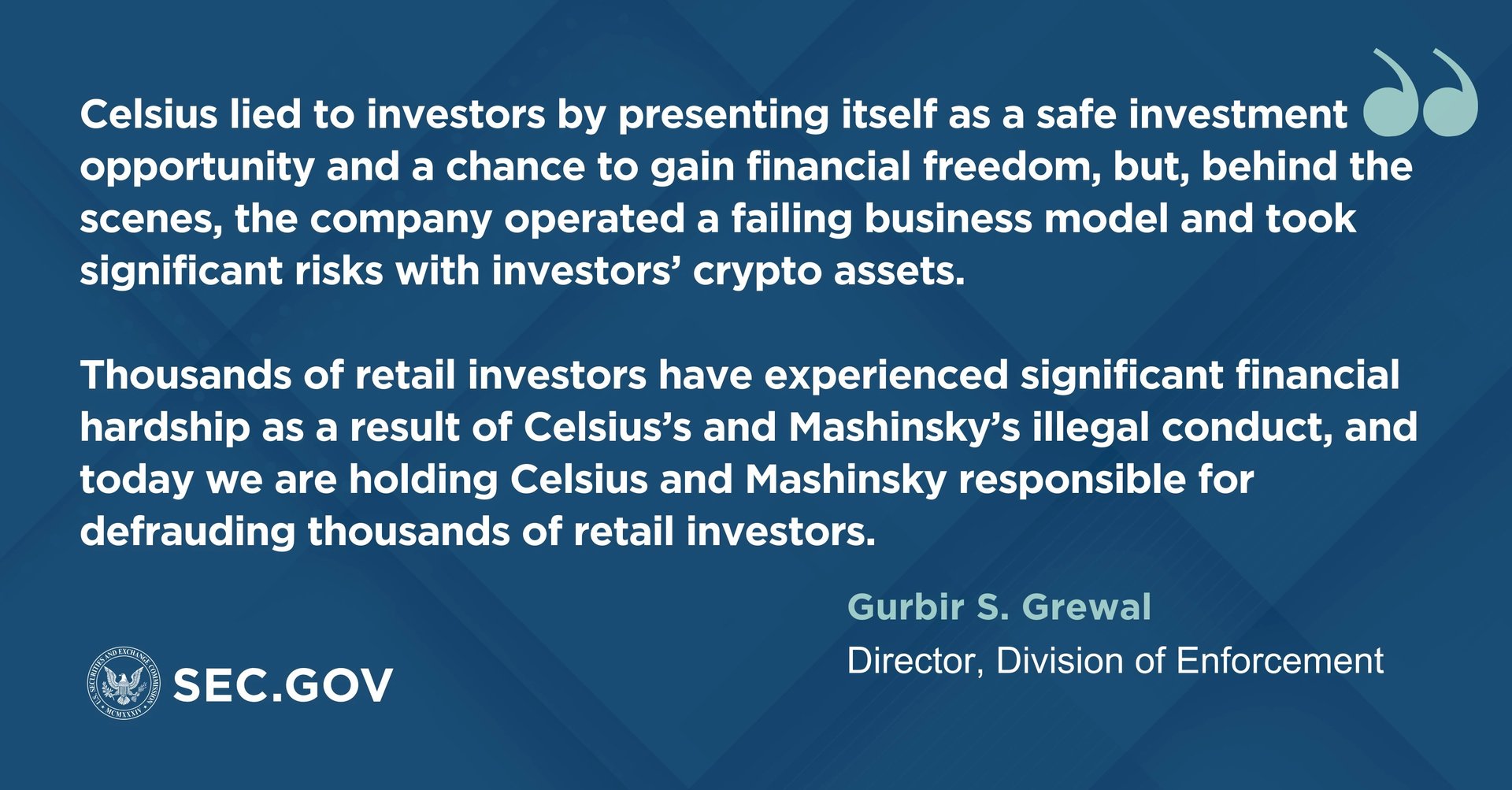Subscribe to wiki
Share wiki
Bookmark
Celsius Network
The Agent Tokenization Platform (ATP):Build autonomous agents with the Agent Development Kit (ADK)
Celsius Network
Celsius Network was a cryptocurrency and financial loans platform that went bankrupt in June 2022. The platform previously allowed crypto-holders to earn interest on their assets in the form of coins, or get a cash loan against their cryptocurrency, using the company's CEL token. [1]
Overview
Celsius Network, founded in 2017 and headquartered in London, utilized their ERC-20 token, CEL, on the Ethereum blockchain to provide a wallet for exchanges, offering reduced rates compared to traditional financial institutions for lending and borrowing coins. Their goal was to replace big banks and futures exchanges with coin holders who can earn returns by lending their cryptocurrency. [3][9]
The network also presented a platform where users could manage their assets through the platform's wallet UI and also utilize CelPay. The borrowing option allows crypto-backed loans with relatively low rates. Users were able to benefit from weekly rewards, promo codes, and referral incentives. CelsiusX, the DeFi arm of Celsius, offered a convergence of Centralized and Decentralized finance and developers were able to use the Celsius API Portal. [22]
CelPay
CelPay, a feature within the Celsius app, was intended to simplify cryptocurrency payments. Users could send digital assets to contacts with the app or share links for recipients to claim coins after creating a verified wallet. Transactions required email confirmation, and there was a $2500 daily transaction limit for security. [23]
CelsiusX
CelsiusX, the decentralized finance (DeFi) arm of Celsius Network, acted as a bridge between Centralized Finance (CeFi) and DeFi. It facilitated asset movement across blockchains, promoting interoperability. CelsiusX expanded CeFi lending into DeFi, offering users benefits from both financial paradigms. [24]
CEL Token
The CEL token, introduced in 2018 through a token sale that raised over $50 million, served as a utility token, granting access to Celsius platform services. [4]
Celsius Loyalty Rewards
Celsius Network had a Loyalty Rewards system with four tiers based on CEL token holdings. Rewards fluctuated with the market and wallet usage. Higher tiers provided bonus interest and loan interest discounts, capped at 35% and 30%, respectively, in the platinum tier. [5][11]

CEL Token Utilities
Holding CEL tokens offered benefits within the Celsius app, such as priority for dollar loan requests, lower loan interest rates (up to 30% off), reduced coin loan interest rates, and higher interest rates (up to 35%) for those receiving weekly interest in CEL tokens. Top holders received exclusive perks. [6][10]
Tokenomics
CEL token holders received rewards from interest generated by institutional traders using CEL tokens for fees. Celsius operated as a non-profit, distributing most funds back to the community. [10]

Celsius facilitated loan services through a two-sided system, involving institutional traders borrowing coins and using CEL tokens for fees, while crypto holders earned CEL tokens as interest on lent coins. [10]
Token Allocation

History
Initial Coin Offering (ICO)
In May 2018, Celsius conducted an Initial Coin Offering (ICO) that generated $50 million by selling 325 million CEL tokens, which accounted for approximately half of the total token supply. Upon purchase, token holders could earn CEL tokens as interest through the "borrow" function on the platform. [12][13]
Equity Crowdfunding
In August 2020, Celsius Network raised more than $20 million through an equity crowdfunding offering. The crowdfunding campaign attracted over 1,000 investors and experienced multiple extensions. The initial target of $10-15 million was surpassed, with Tether contributing $10 million to the raise. Alex Mashinsky announced the extension to allow more investors to participate in the offering. [8]
Bankruptcy
Filing for Bankruptcy
In July 2022, faced with a liquidity crisis, Celsius Network made the decision to file for Chapter 11 bankruptcy protection in the U.S. Bankruptcy Court for the Southern District of New York. The company's move followed a temporary suspension of withdrawals, swaps, and transfers on its platform, aimed at stabilizing the business and safeguarding customer interests. This strategic pause was intended to prevent early withdrawals from disadvantaging certain customers, leaving others waiting for the completion of value generation from longer-term asset deployment activities before receiving recoveries. [25]
Judge Rules For Celsius
In January 2023, a federal bankruptcy judge ruled in favor of Celsius Network's ownership claim over cryptocurrencies deposited into its high-interest Earn program. The program allowed users to deposit cryptocurrencies such as Bitcoin, Ethereum, and Tether and receive weekly interest payments. Based on the court's determination, assets, including stablecoins, deposited into Earn Accounts became the property of Celsius Network, a ruling influenced by the platform's clear terms and conditions. [26]
Settlement to Exit Bankruptcy
On July 20, 2023, Celsius Network achieved crucial settlements, addressing $78.2 billion in unsecured claims, allowing for the asset to be returned to customers and led to the eventual conclusion of the bankruptcy proceedings. The settlements, subject to evaluation by Judge Martin Glenn and open for responses until August 3, encompassed measures to enhance customer recoveries by 5% and provide resolutions for participants of the Earn program. This progress underscored Celsius Network's dedication to overcoming challenges, rebuilding trust, and advancing its post-bankruptcy vision. [27]
Legal Disputes
Ponzi Scheme Accusation
In November 2022, Celsius Network faced a lawsuit filed by former investment manager Jason Stone, who accused the crypto lending platform of engaging in fraudulent activities and operating as a Ponzi scheme. Stone alleged that Celsius artificially inflated the price of its native digital coin, failed to implement proper risk management strategies, and used customer deposits to rig the value of its token. The lawsuit claimed that Celsius CEO Alex Mashinsky enriched himself at the expense of depositors. [14][15]
Stone further alleged that Celsius failed to hedge against trading risks and had significant liabilities denominated in the cryptocurrency Ether without sufficient holdings to cover them. As a result, when customers attempted to withdraw their deposits, Celsius was forced to buy more ether at high prices, incurring heavy losses. The lawsuit accused Celsius of resorting to offering double-digit interest rates to attract new depositors and repay earlier investors, characterizing the company as a Ponzi scheme. [14][15]
Celsius faced additional scrutiny due to a liquidity crisis and the temporary suspension of withdrawals for its users. Stone's departure from Celsius in March 2021 was allegedly prompted by the company's unexplained balance sheet hole of $100 million to $200 million. The lawsuit claimed that Celsius continued to control an Ethereum wallet, which the CEO allegedly used for personal benefit, including transferring valuable non-fungible tokens to his wife's wallet. [14][15]
Lawsuits Against Celsius and Mashinsky
On July 13, 2023, a series of lawsuits filed by various federal agencies, including the U.S. Department of Justice (DOJ), the Securities and Exchange Commission (SEC), the Federal Trade Commission (FTC), and the Commodity Futures Trading Commission (CFTC). These legal actions targeted both Celsius Network as a company and its former CEO, Alex Mashinsky. [16]
U.S. Department of Justice (DOJ) Lawsuit
On July 13, 2023, the DOJ brought criminal charges against Mashinsky, including allegations of defrauding customers and pocketing $42 million. The indictment accused Mashinsky and other Celsius executives of orchestrating a scheme to inflate the value of Celsius' native token, CEL, in order to profit from its sale. Mashinsky and his colleague, former chief revenue officer Roni Cohen-Pavon, were both charged in connection with these criminal activities. [16][17]
Today I am announcing the unsealing of an indictment charging Celsius’s founder and CEO, Alex Mashinsky, with orchestrating a scheme to defraud customers of Celsius through a series of false claims about the fundamental safety and security of the Celsius platform, and for participating in a scheme with Celsius’s Chief Revenue Officer, Roni Cohen-Pavon, to inflate the price of Celsius’s proprietary token, CEL. - U.S. Attorney Damian Williams
Securities and Exchange Commission (SEC) Lawsuit
On July 14th, 2023, the SEC also filed a lawsuit against Celsius Network and Mashinsky, alleging that the company repeatedly lied to customers about the safety of its platform. The SEC claimed that Celsius made false statements regarding regulatory approvals, misrepresented its user base, and engaged in market manipulation. The complaint further accused Celsius of offering and selling unregistered securities through its lending program. [16][18]

Federal Trade Commission (FTC) Lawsuit
On July 13, 2023, FTC accused Celsius of deceiving consumers by misleading them into depositing their assets and subsequently mismanaging their investments. The FTC alleged that Celsius lied to investors, failed to maintain sufficient liquid assets for withdrawals, and falsely marketed itself as a safe alternative to traditional banking. The lawsuit named not only Celsius Network but also its co-founders Shlomi Daniel Leon and Hanoch "Nuke" Goldstein. [16][19]
“Celsius touted a new business model but engaged in an old-fashioned swindle. Today’s action banning Celsius from handling people’s money and holding its executives accountable should make clear that emerging technologies are not above the law.” - Samuel Levine, Director of the FTC’s Bureau of Consumer Protection.
Commodity Futures Trading Commission (CFTC) Lawsuit
The CFTC charged Mashinsky and Celsius Network with fraud and material misrepresentations related to the operation of Celsius' digital asset-based finance platform. The CFTC alleged that Celsius made false statements to customers and deceived them about the company's leverage. Mashinsky was specifically cautioned by Celsius senior management to cease making misleading statements. [16][20]
Consequences and Settlements
As a result of these lawsuits, Alexander Mashinsky was arrested and faced criminal charges, while Celsius Network and its affiliates were subject to fines, penalties, and bans. Mashinsky has pleaded not guilty to charges of fraud and manipulation of the CEL token. Following his arrest, a U.S. District Judge set Mashinsky's bail at $40 million. As part of the bail agreement, he was restricted from traveling and prohibited from opening new bank or crypto accounts. Mashinsky's wife signed the bond, and the bond was secured by a financial claim on his New York City home and bank account. The coordinated legal action against Mashinsky and other executives was announced by the Department of Justice, Federal Trade Commission, and federal securities and commodities regulators. Mashinsky's lawyers have stated that he denies the allegations and looks forward to defending himself in court. [21]
Shutdown of Celsius
On August 9, 2023, Celsius filed their disclosure statement that stated that they would be shutting down within 90 days of the filing date. A new entity called "NewCo" will take over, managed by the Fahrenheit Group and owned by Celsius' creditors. Users won't have access to their Celsius accounts after the 90-day withdrawal window expires. However, the company plans to repay creditors, including those who earned rewards through partner programs and other exchanges. In the aftermath of these developments, the crypto consortium Fahrenheit LLC stepped in, winning the bid to take over Celsius for $2 billion. They aim to distribute at least $2.03 billion in cryptocurrency to creditors, subject to price fluctuations, using third-party distribution agents like Paypal for US creditors. [28][29][30]
See something wrong?
The Agent Tokenization Platform (ATP):Build autonomous agents with the Agent Development Kit (ADK)
